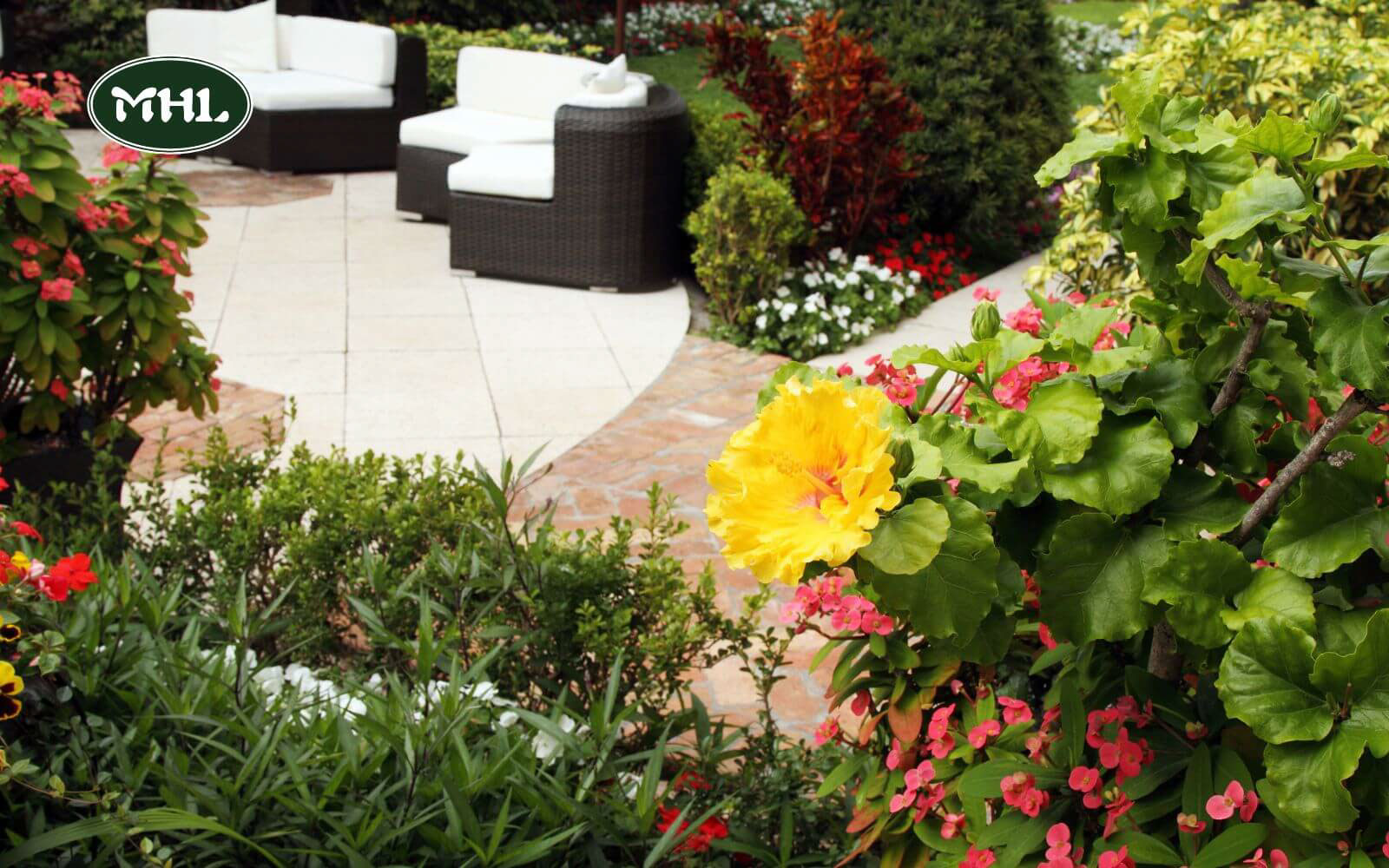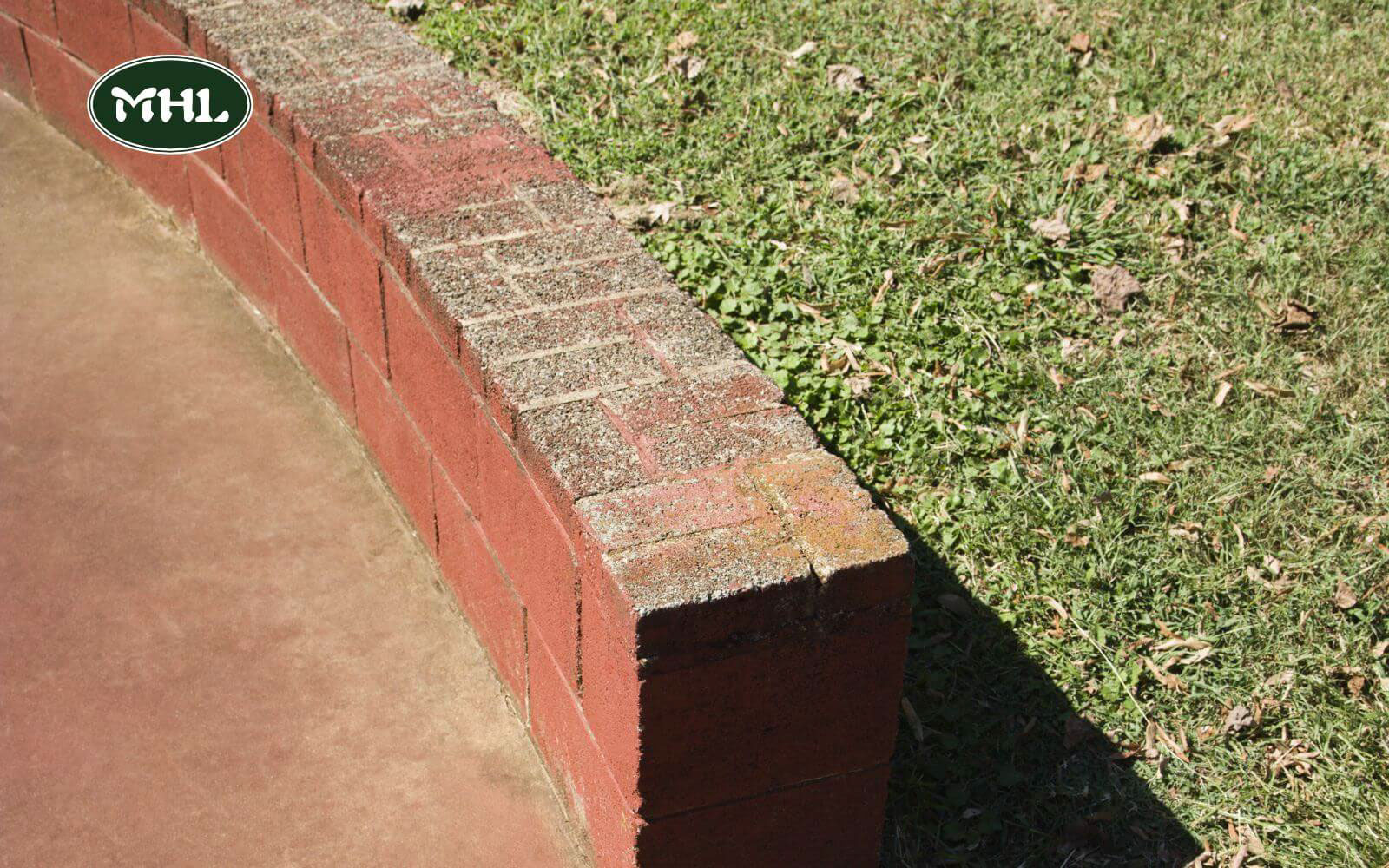Your home’s interior beautifully reflects your style, but what about your yard? If you’re tired of a bland, poorly designed outdoor space, retaining walls can enhance both the aesthetics and functionality of your landscape. Retaining walls can draw attention to key features and provide structural support. In this blog post, we’ll explain what retaining walls are, and highlight 4 common types of retaining walls, with the materials widely used to construct one.
What is a retaining wall?
A retaining wall is a versatile landscaping feature that can serve functional, aesthetic, or dual purposes, depending on your needs. Whether you’re looking to control soil erosion or enhance the visual appeal of your yard, a retaining wall offers a practical solution.
Built from materials like stone, concrete, or wood, retaining walls are designed to stabilize soil and prevent erosion on sloped terrain. In addition to their functionality, they can also add a striking design element to your landscape and increase your home’s value.
So, retaining walls aren’t just about looks—they’re also about safety.

Why should you have retaining walls in your yard?
If your landscape has steep slopes, adding retaining walls is a smart choice. Not only do they provide essential support for large amounts of soil, but a well-designed retaining wall can also become an attractive focal point in your backyard. Retaining walls offer several other benefits that can help turn your landscape into a functional and beautiful space.
4 benefits of retaining walls in your yard:
- Enhance drainage and minimize soil erosion
- Create natural seating areas
- Boost curb appeal
- Level uneven terrain and offer structural support

Enhance drainage and minimize soil erosion
Retaining walls are built to manage water flow, improving drainage and preventing soil erosion. They help direct water away from your landscape and keep the soil securely in place, making it easier to maintain your property. These features are particularly beneficial if your property is on a slope or hillside.
Create natural seating areas
A retaining wall, when built at the right height, can double as natural seating, adding functional space to your backyard. It can be used to enclose a patio or surround a fire pit, turning it into the perfect gathering spot for friends and neighbors. With the added seating, your fire pit could become the go-to place for socializing in the neighborhood. Plus, during times when social media and the internet takes a lot of our time, this feature becomes even more valuable.

Boost curb appeal
When built correctly, a retaining wall can significantly boost your home’s curb appeal. Not only can it enhance your yard’s aesthetic by serving as raised planters for gardens, but it also adds visual interest by breaking up the space around your property. With various design options available, a well-constructed retaining wall can make your home stand out from others in the neighborhood.
Level uneven terrain and offer structural support
Maintaining a hilly landscape can be tough for many homeowners. A multi-tiered retaining wall offers a great solution for leveling uneven areas. Besides preventing soil erosion, it adds visual depth to your property, enhancing its appearance. With a retaining wall, you won’t have to worry about flooding or erosion in your garden or lawn.

How many types of retaining walls?
Retaining walls come in various types, shapes, and sizes, each designed to meet the specific needs of a project based on the site conditions. There are 4 common types of retaining walls: gravity retaining walls, anchored retaining walls, cantilever retaining walls and sheet pile retaining walls.

Gravity retaining walls
Gravity retaining walls rely on their weight to resist the pressure of the soil behind them. These walls are usually quite massive, as they need a substantial gravity load to counteract the soil’s force. They must withstand bearing, sliding, and overturning forces and can be made from various materials, including precast concrete, concrete blocks, stone, or masonry. They are suitable for heights of up to 10 feet.
Anchored retaining walls
Anchored retaining walls are ideal for areas with limited space where a thin wall is necessary. They work particularly well for holding back loose soil over rocks. These walls can be built to great heights due to their construction method, which uses deep wires or cable rods driven horizontally into the ground, with the ends secured in poured concrete for anchoring. These anchors, or tiebacks, help counteract sliding pressure and prevent the wall from overturning.
Cantilevered retaining walls
Cantilevered retaining walls consist of two main parts: a stem and a base slab, both typically made from precast concrete, prestressed concrete, or reinforced concrete. When the back is submerged under the retained material, it forms an L-shaped structure. These are the most common types of retaining walls. They can be constructed on-site (cast-in-place) or precast offsite.
The base slab includes a heel, located beneath the backfill, and a toe, which supports the rest of the wall. These walls must account for various forces, including bearing, sliding, and overturning pressure. They can be effectively built up to a height of 33 feet.
Sheet pile retaining walls
Sheet pile retaining walls are a type of retaining wall that uses steel sheets instead of concrete. These walls are constructed by driving steel sheets deep enough into the ground to counter any forces attempting to push them over. They can be either temporary or permanent and provide high rigidity for retaining lateral pressure to significant depths without risking surrounding structures.
Similar to concrete pile walls, sheet pile retaining walls use steel sheets driven into a slope or excavated to a required depth. However, they cannot withstand the same pressure as concrete pile walls and are only cost-effective up to a height of 20 feet.

What are the other different types of retaining walls?
While the types mentioned above are the most common types of retaining walls, there are several other variations available.
5 other different types of retaining walls:
- Gabion retaining walls
- Counterfort or buttressed retaining walls
- Mechanically stabilized earth walls (MSE walls)
- Crib retaining walls
- Hybrid systems

Gabion retaining walls
Gabion retaining walls consist of rectangular wire mesh boxes filled with rocks or other materials, stacked together in “cells.” They are typically used to stabilize steep slopes and are commonly seen along highways, holding back cliffsides to prevent landslides or falling rocks.
Counterfort or buttressed retaining walls
Counterfort retaining walls, one of the reinforced types of retaining walls, are also known as buttressed retaining walls. They begin with a cantilever structure, which is strengthened by diagonal supports called monolithic counterforts, placed along the front of the wall and base slab to enhance stability against gravity. These walls are generally built to stand between 25 to 40 feet tall.
Mechanically stabilized earth walls (MSE walls)
MSE (Mechanically Stabilized Earth) retaining walls are one of the most cost-effective options. They use metallic strips or plastic mesh embedded in granular material to reinforce the soil. This added stability supports the concrete blocks, panels, or temporary earth walls, keeping the pressure from the soil in check.
Crib retaining walls
Crib walls are a type of gravity wall made from interlocking boxes of precast concrete or timber. These boxes are filled with granular materials, such as crushed stone, which provides strong reinforcement and excellent drainage by allowing water to pass through. Crib walls are commonly used in gardens and planter areas but are not suitable for supporting heavy structures or steep slopes.
Hybrid systems
Hybrid systems, one of the types of retaining walls, combine two or more retaining wall methods. These walls rely on both reinforcement and mass for stability, offering enhanced structural support. Often referred to as composite retaining wall systems, hybrid walls blend techniques to create a more durable solution for various landscape needs.
Which materials are used to build different types of retaining walls?
While a retaining wall can be constructed from various materials, the types of retaining walls typically fall into 4 materials: concrete, stone, wood, and brick.
Each material has unique benefits, making them popular choices for creating functional and visually appealing landscape features.

Concrete retaining walls
Concrete is a flexible option for building retaining walls and comes in different forms, like concrete pillars, solid poured walls, prefabricated panels, or concrete blocks, which are often used in homes.
Poured concrete walls are usually stronger than block walls and can be built taller. Both block and poured concrete walls allow for a variety of design options, but poured walls need special skills to make sure they’re well-supported. If not done correctly, they can crack or warp.
Concrete retaining walls are especially popular in modern landscaping because of their durability and design versatility.
Wood retaining walls
Wood retaining walls are made from easily accessible and renewable materials, offering the benefit of simple construction compared to other types of retaining walls.
However, wood isn’t as strong or rigid as other materials, so it’s best suited for walls no higher than four feet. One of the key advantages of wood is its versatility—it works well with nearly any architectural style and blends naturally into the landscape.
When properly installed and treated with preservatives and waterproofing, wood retaining walls can last for 20 years or more. However, they don’t last as long as other materials. Without regular maintenance, such as re-treatment, wood can rot and lose its strength over time.

Stone retaining walls
Stone is a classic and versatile material used in many types of retaining walls. It offers numerous benefits: it’s natural, eco-friendly, and can suit any aesthetic or architectural style. Stone walls can be built to support structures of varying heights and thicknesses, making them highly durable.
However, building stone retaining walls can be challenging and typically requires a skilled contractor or landscape architect to ensure proper design. Stone walls come in options like stone veneer or dry/builder stone.
While dry stone walls provide a natural solution for handling grade changes, they can struggle with controlling water flow. Water buildup inside the wall can compromise its structure, so it’s essential to incorporate proper drainage. Stone retaining walls are often popular in country, colonial, and English garden-style landscapes.
Brick retaining walls
Brick is strong, durable, and long-lasting, making it a great option for retaining walls. However, because brick forms a solid structure with no natural drainage, it’s important to include drainage systems within the wall to protect its strength and stability.
Building a brick retaining wall can be labor-intensive and usually requires a skilled mason or landscaper. But once completed, it creates a sturdy, long-lasting wall that can enhance any type of landscape or architectural design.

Ready to build your dream retaining wall in your yard?
At Mile High Lifescape, we provide practical and cost-effective retaining wall services to enhance your landscape.
Our team excels in building robust retaining walls that prevent soil erosion and create level spaces in your yard. These walls not only boost the functionality of your outdoor area but also add an aesthetic touch. Whether you need a retaining wall for a garden, driveway, or sloped terrain, we have the skills to design and construct a durable solution tailored to your needs.
Select Mile High Lifescape for reliable retaining walls that enhance and transform your garden. Feel free to reach out to us now!
Contact us:
Address: 1427 S Federal Blvd, Denver, CO 80219
Hotline: +1 (720) 301-3335
Email: [email protected]
Reference
1. Benefits of Adding a Retaining Wall to Your Landscape. Available at: https://newenglandenterprises.com/retaining-wall-benefits/
2. Different Types of Retaining Walls and Their Purposes. Available at: https://757brick.com/blog/different-types-of-retaining-walls/
3. Retaining Wall Materials: Types, Costs, and Considerations. Available at: https://www.thisoldhouse.com/masonry/21545637/retaining-wall-materials







